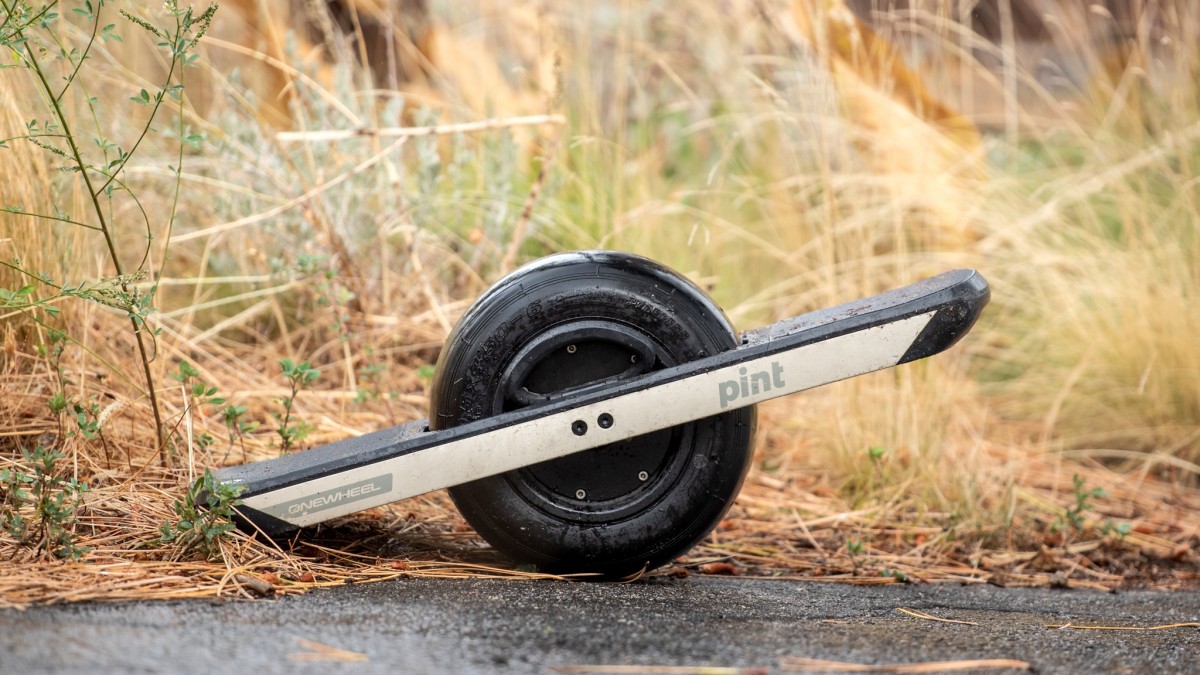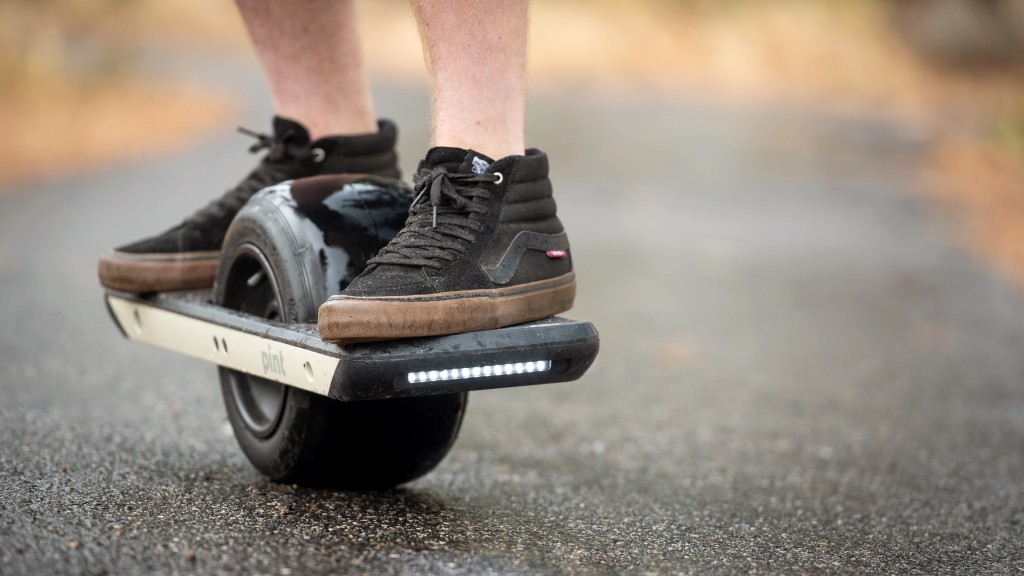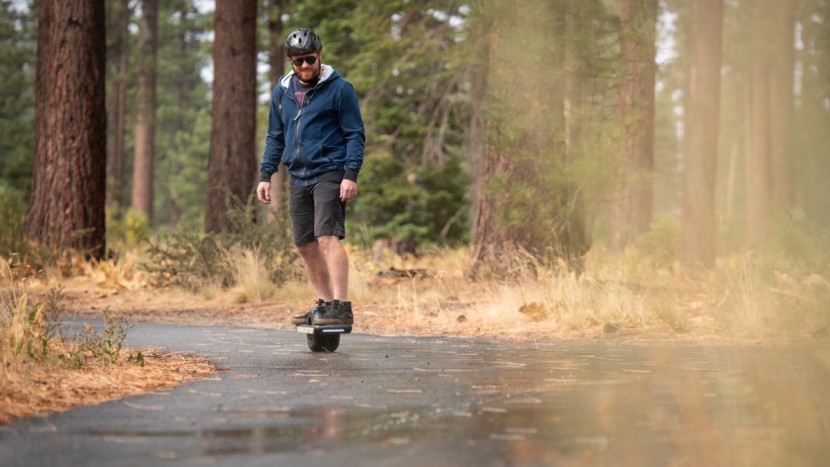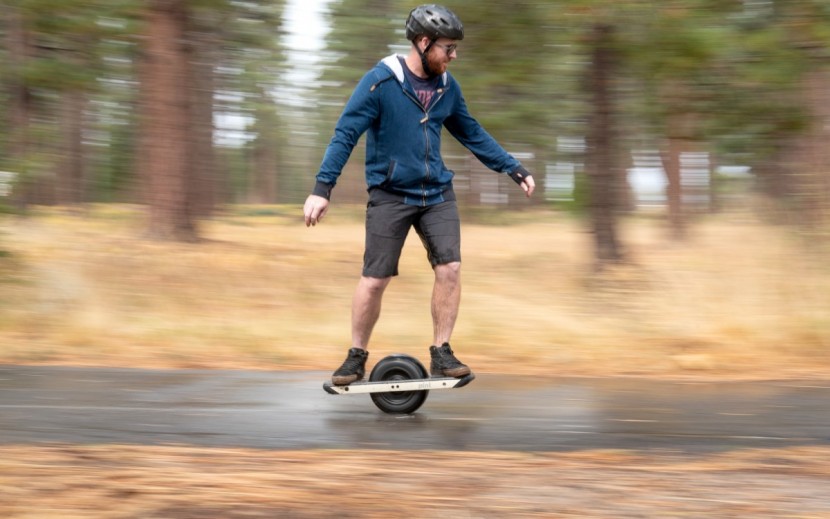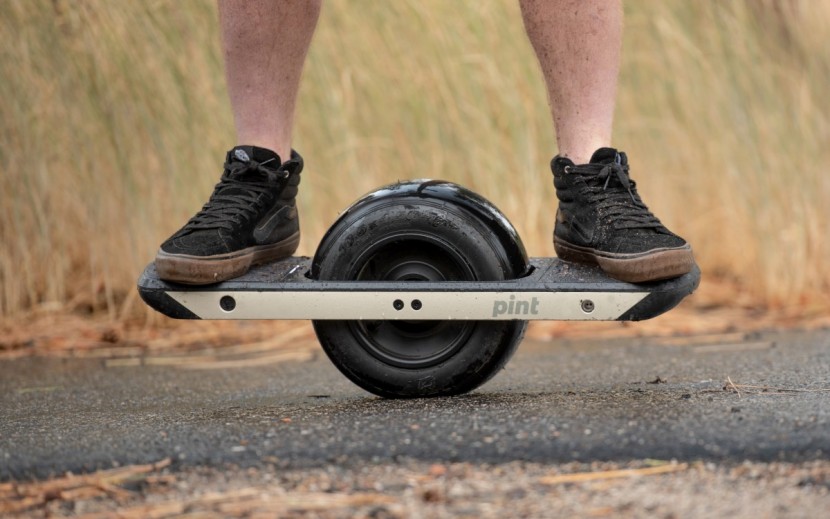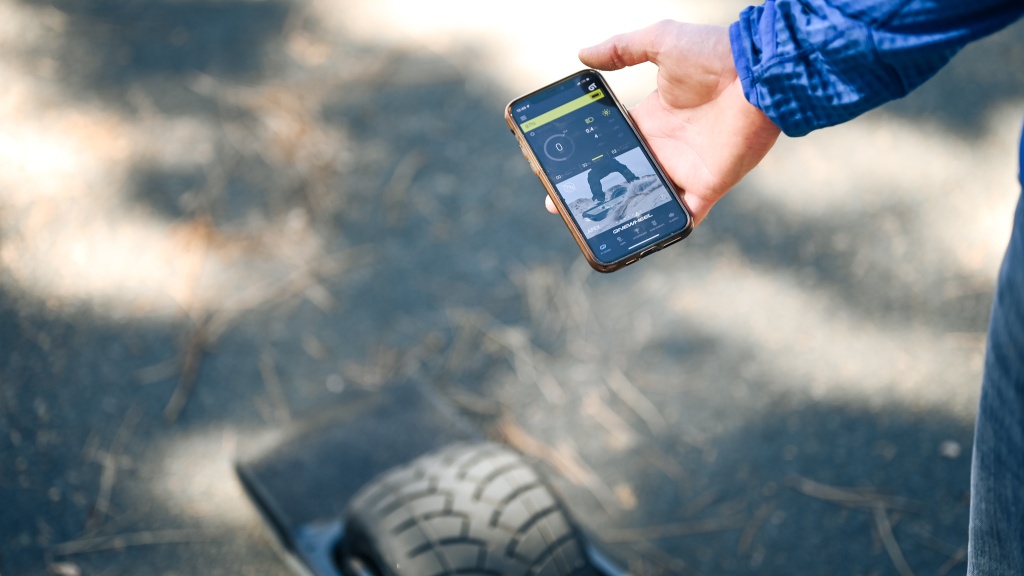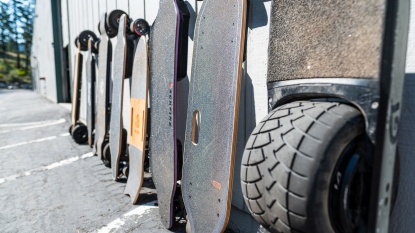
Our Verdict
Our Analysis and Test Results
Ride Comfort
The Pint does an outstanding job at handling bumpy and uneven terrain, easily cruising over obstacles that would stop plenty of other skateboards in their tracks.
It also does a great job of handling cracks and other sections of damaged pavement, flying over them without a hint of hesitation. This board feels playful and fun, but it can be a little fatiguing to ride for long periods, especially for your leading leg and your core muscles.
Range
The Onewheel made it for about 10 miles before completely dying, but the last tenth of a mile or so was quite a struggle. This was two miles further than we expected based on the manufacturer's claims.
We also timed how long it took for the battery to recharge when it was completely depleted and found that it took just under two hours for the Pint. This option offers a range that many riders may find to be plenty enough for their needs, especially when considering its price.
Braking
The Pint makes it easy enough to ride down a steep hill, allowing you to go as slow as you want. It also stops exceptionally quickly on flat ground, only taking about 15 feet to come to a complete stop when traveling at a speed of around 12 mph.
The board naturally forces you to lean on your back leg to stop, keeping your body in a better position for braking.
You probably could stop at an even shorter distance, but the back of the board would drag on the ground and could cause you to lose control. Once again, this relatively inexpensive option offers excellent value with high scores in numerous metrics.
Speed
The Pint isn't the quickest board we have seen so far, but it is faster than plenty of other boards we have tested.
In our tests, this board hit just a bit more than 14 miles per hour on flat ground — just a bit shy of the claimed top speed of 16 miles per hour by the manufacturer.
We found the self-balancing circuitry began to push back at this speed and prevented us from going any faster, but we did hit the 16 mph speed when going downhill with this board, according to its companion app.
This board did exceptionally well with acceleration, having one of the fastest average times of the group. It's exceptionally quick to start and doesn't take long to hit its maximum speed.
Hills
The Onewheel Pint did exceptionally well in our hill tests.
This electric skateboard zoomed right up a hill with a 14-15% grade without slowing down or hesitating in the slightest. We think this board had plenty of power to go up an even steeper hill, but the bottom of the board would begin to drag if the hill was any steeper.
Beginner Friendly
The Pint, as with any product from Onewheel, has a bit of a learning curve given its single-wheeled construction. We'd argue that this board is worth the time spent learning, but some will want to seek a more friendly option to learn the sport.
To change modes on the Pint, you'll need to use an app, since this design doesn't have an actual remote. We found the app easy to use and adjust features of the Onewheel — it even offers friendly tutorials. One of the app's offerings, simple stop, gives riders the ability to gently ride backward to disengage the board, making it potentially easier for beginners to step off. Riding on a single wheel is simply going to have a learning curve, even with the intelligence of the board's self-balance.
The Pint is significantly lighter than some of its siblings from Onewheel, offering easier transport at a measured weight of 25.5 pounds.
Should You Buy the Onewheel Pint?
If you always wanted to get a Onewheel, self-balancing skateboard of your own and couldn't afford the price tag of the super premium models, the Pint is for you. This board is fast, climbs hills easily, and has a reasonable range, all while being exceptionally fun to ride at a price that is about half that of the top boards.
What Other Electric Skateboard Should You Consider?
If you love the idea of a monowheel electric skateboard but also want something a little faster and more rugged with a larger range, the Onewheel GT is the way to go. For those that are in the market for a traditional, four-wheeled ESB, the Ownboard Carbon Zeus Pro is hard to beat, especially when it comes to speed and range. If you're just entering the world of electric skateboards and don't want to empty your bank account to purchase one, the Backfire Zealot S offers commendable performance at a reasonable price.
| Awards | A Budget-Friendly Onewheel Option |
|---|---|
| Price | $1,050 List |
Overall Score  |
|
| Star Rating | |
| Bottom Line | Excelling on off-pavement adventures, this board is almost as capable as the full-sized Onewheel but retails for significantly less |
| Pros | Impressive performance, super fun to ride, handles off-roading and rough pavement easily, excellent price point |
| Cons | Heavy, so-so range |
| Rating Categories | Onewheel Pint |
| Ride Comfort (30%) | |
| Range (20%) | |
| Braking (20%) | |
| Speed (10%) | |
| Hills (10%) | |
| Beginner Friendly (10%) | |
| Specifications | Onewheel Pint |
| Tested Maximum Range | 10.0 miles |
| Tested Maximum Speed | 14.2 mph |
| Tested Stopping Distance | 14 ft |
| Measured Weight | 25.5 lbs |
| Measured Time in Uphill Grade | 32 seconds |
| Measured Charge Time | 114 minutes |
| Measured Deck Length | 27" |
| Riding Modes | Redwood Pacific Elevated Skyline |
| Battery | Lithium Ion (NMC) |
| Manufacturer Weight Limit | 250 lbs |
| Manufacturer Deck Material | Composite Material |
| Wheel Size | 267 mm |
| Truck Width | N/A |
| App available | Yes |
| Lighting | Yes |


